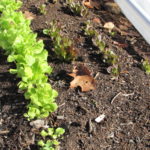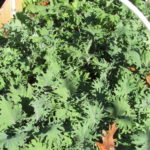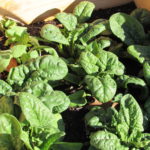It’s that time of year – one of my favorites – to get ready to go into high gear for Spring Planting. Yay – it’s time to tidy up!
Spring is when the garden beds get cleaned up. Since a lot of beneficials winter over in the debris from fall crops, waiting until spring to clear the dead branches, leaves and other materials gives those beneficials a nice home during cold weather. In thanks, they’ll be there for your spring and summer crops. And everything that decomposed over the winter (like root mass from old plants) is busy feeding your worm population as well as the soil. It’s a win-win.
After four very labor intensive days here on The Little Half Acre, the main garden beds are now tidy and planted with various lettuces, kales, spinach, radishes, parsnips, turnip greens, rutabagas, kohlrabi and onions. Fresh wood chips line the pathways between beds.
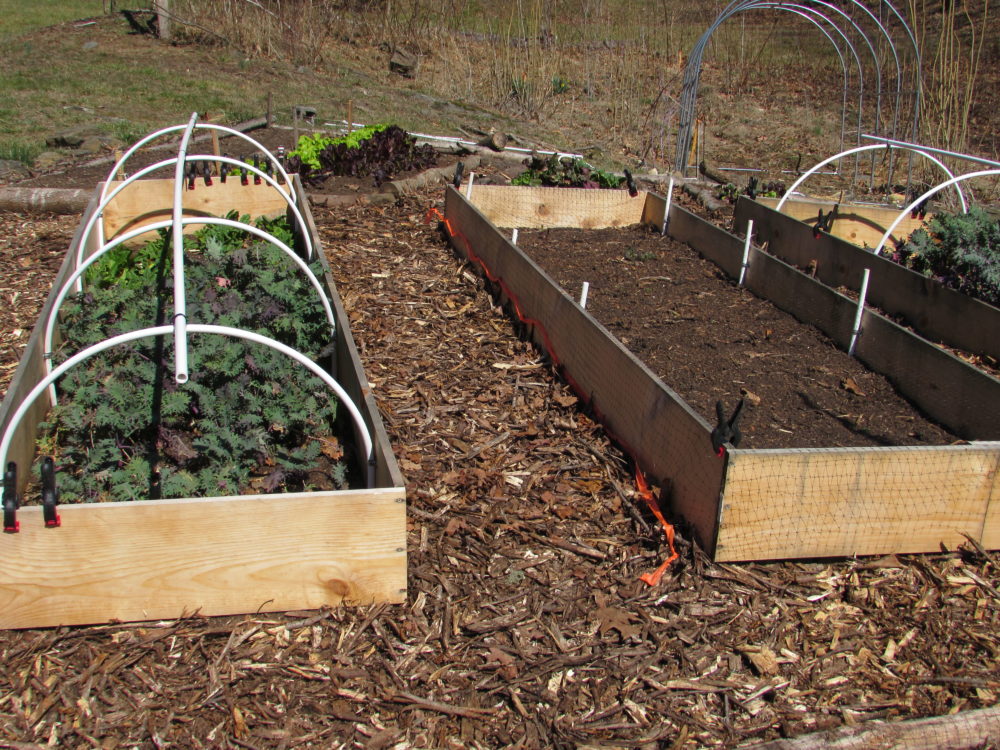 Ditto for the two new terraced beds that we put in last fall. They’ve been cleaned up and in two more weeks the carrots, beets, potatoes and turnips will go in the ground when the Farmer’s Almanac says it’s time to plant root crops, according to the phase of the moon.
Ditto for the two new terraced beds that we put in last fall. They’ve been cleaned up and in two more weeks the carrots, beets, potatoes and turnips will go in the ground when the Farmer’s Almanac says it’s time to plant root crops, according to the phase of the moon.
Last year’s main garden beds were simply raked up mounds of compost.
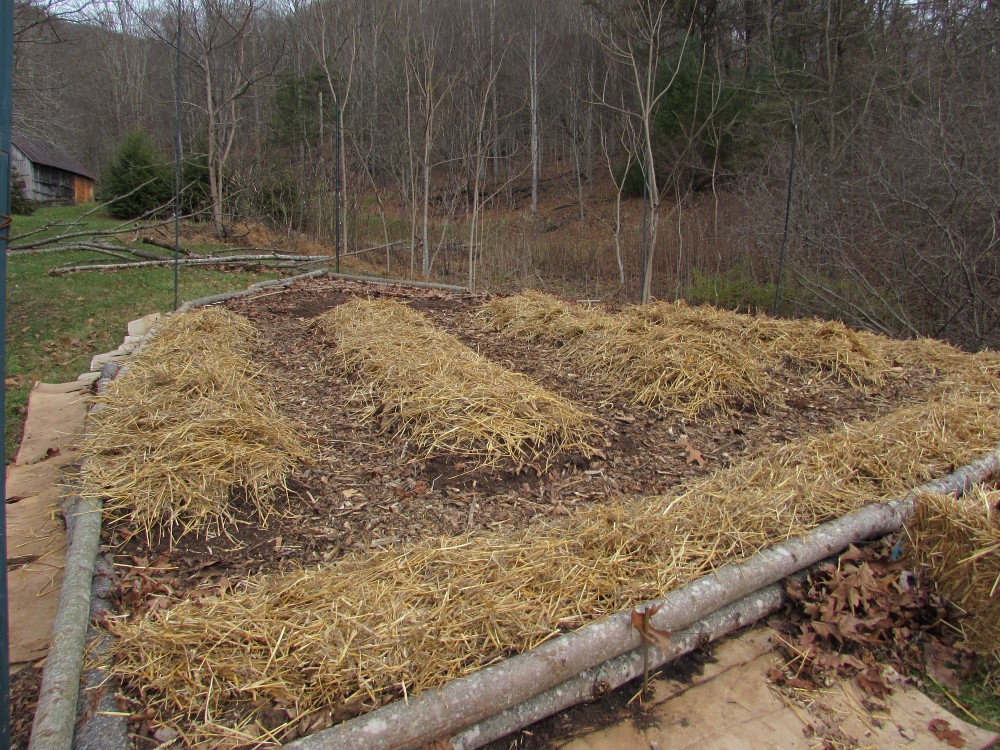
It was a quick way to get veggies growing. Same for the straw bale terraces.
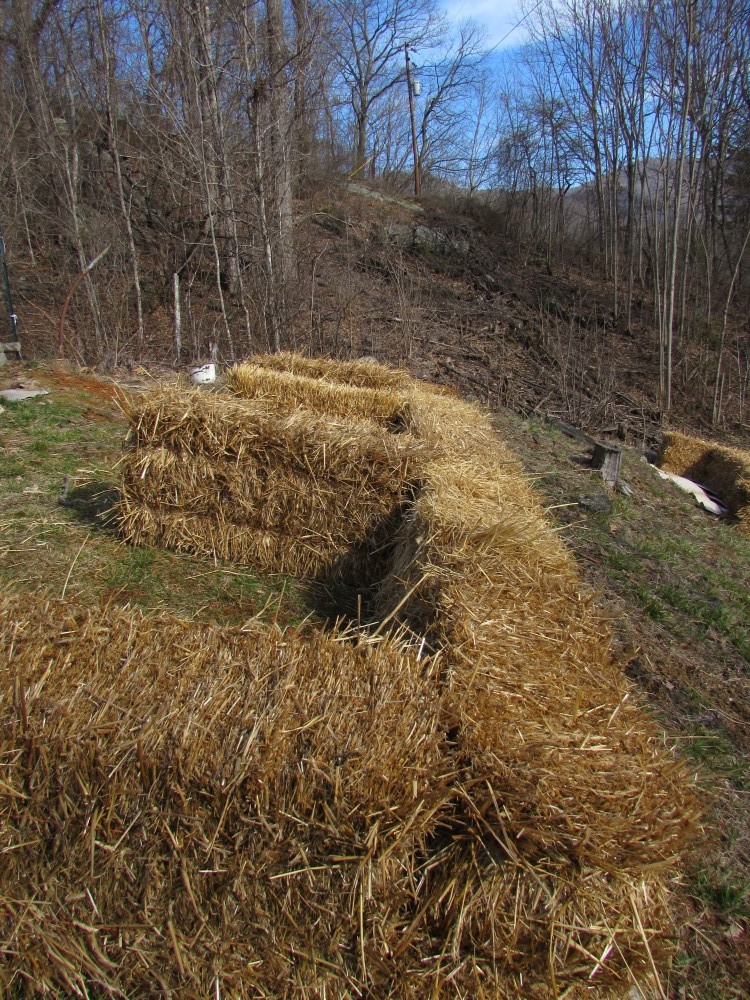
It was a quick fix for our rock and clay half acre and, had we not been in the worst drought in decades, would have been quite successful. As it was, we fed ourselves, one of our daughters and even a friend or two when green beans, tomatoes or cucumbers threatened to over run us. But the plan was to establish permanent, or semi-permanent, beds depending on location. The terraces were the first to go up, replacing the straw bales. And the decaying straw went into the terraces (along with expended microgreens compost and root mass) as part of the new soil.
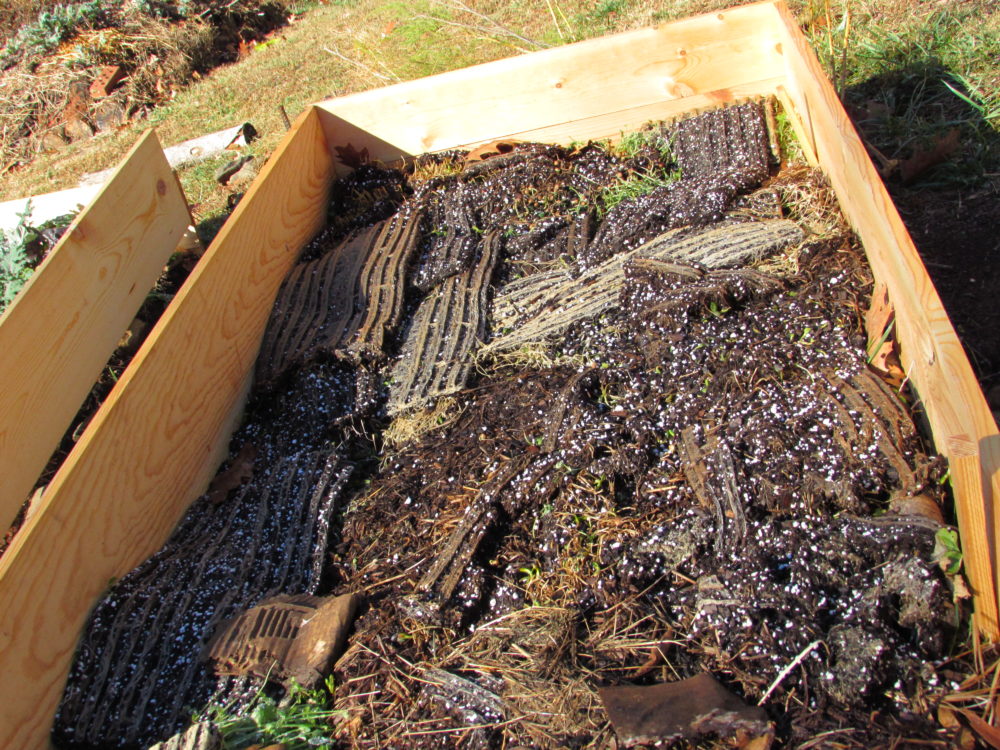 The terraces will be permanent since they have greatly reduced the steep slope in the one area that gets the most sun on our little homestead. Going up and down the slope got particularly dangerous when rain turned the clay soil into a giant slide. The Happy Homesteader (me) had more than one mishap!
The terraces will be permanent since they have greatly reduced the steep slope in the one area that gets the most sun on our little homestead. Going up and down the slope got particularly dangerous when rain turned the clay soil into a giant slide. The Happy Homesteader (me) had more than one mishap!
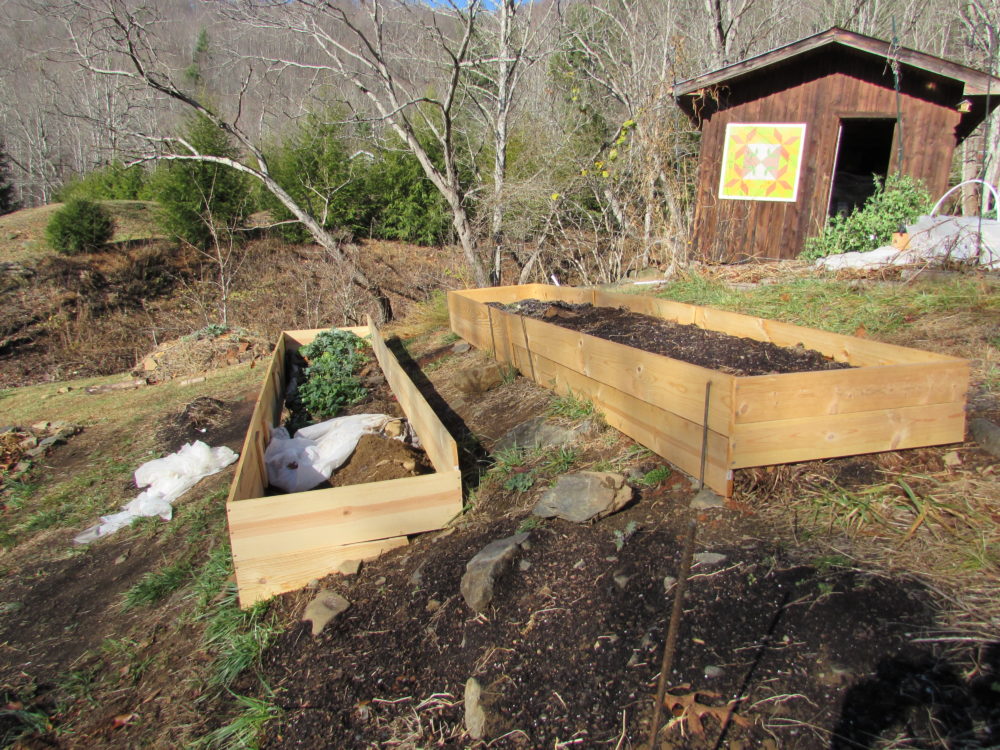
Not shown in the photo is a bunch of wood chips between the two terraces that levels the path between them. No more falling down the hill! The narrower boards along the back of each terrace will allow me to add trellising as the snow peas and Wando garden peas get taller.
The main garden area will eventually move (at least partially) into the general landscape, according to permaculture practices. Until that happens though, they need to be very productive veggie plots. So, since we only had enough lumber to build wood frames for three of the raised beds, the Happy Homesteader spent the last four days carrying six to eight feet sapling trunks up the steep incline to turn last year’s raised mounds into true raised beds.
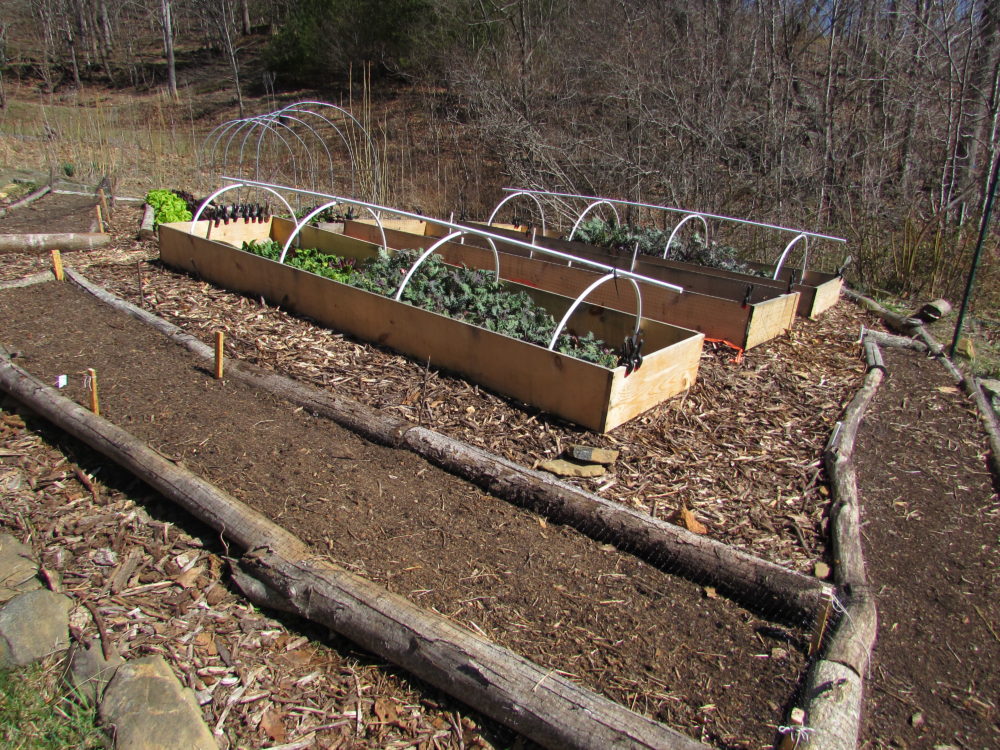 The Innocent Bystander (hubby) hauled bucket after bucket of wood chips up the steep incline to line the pathways between the beds. There was lots of sweating, grunting and sore muscles involved, along with the occasional four letter word, but now I can plant all the way to the edges in each of the raised beds. I’ve gained more growing space and that’s always a good thing. And as the beds progress from rows of veggies to permaculture food forest, I can easily move the three wooden frames to another location and plant veggies in the new location.
The Innocent Bystander (hubby) hauled bucket after bucket of wood chips up the steep incline to line the pathways between the beds. There was lots of sweating, grunting and sore muscles involved, along with the occasional four letter word, but now I can plant all the way to the edges in each of the raised beds. I’ve gained more growing space and that’s always a good thing. And as the beds progress from rows of veggies to permaculture food forest, I can easily move the three wooden frames to another location and plant veggies in the new location.
Speaking of planting, according to my handy-dandy planting guide from my local Ag office, it’s time to plant all the usual spring seed here in Zone 6B. Those tidy beds now hold all the stuff I mentioned above and the snow peas and garden peas that were planted weeks ago are up about an inch already. But I just ordered a bunch of frost blanket because I know we’re gonna have plenty of freezing temps before it’s over. We’ve had above normal temperatures since January and that’s great because here’s what that’s done for all the winter crops that have been surviving and growing just fine under row cover and low hoop tunnels since October —
A pretty sight, isn’t it? And it’s so yummy to eat fresh picked spinach, radishes, green onions, kale and salad in January. And it looks like we’ll harvest our first cabbage in a few more weeks from a bed that only gets two hours of sunlight in winter months. But when the weather goes from the mid-fifties during the day to the upper twenties overnight, there’s a whole lot of “uncover-the-garden-beds” and “cover-the-garden-beds” activity until you just want to scream. Yep, the vocal cords get a workout. And now that I’ve planted lots and lots of spring seeds in the rest of those “tidy-brightey” garden beds, I’ll be screaming for real after doing the “cover-uncover” dance for the next six to eight weeks. Of course, the easy alternative is to just wait and plant later like all my neighbors do. Hhmmmm …..nah, maybe not. Not only do we eat from the garden year round, but we’re usually eating peas and then summer veggies a good three to four weeks earlier than those neighbors. And when it comes to sinking your teeth into the first ripe tomato of the season, it’s worth all the effort isn’t it???
So get out there and plant some seed. Buy some frost blanket or row cover and put some PVC or aluminum hoops over a bed or two and cover them with plastic. When you bite into a crisp radish in January, or enjoy a colorful and nutritious salad in February, you’ll agree it’s worth all the effort, I guarantee it!
Happy homesteading!
